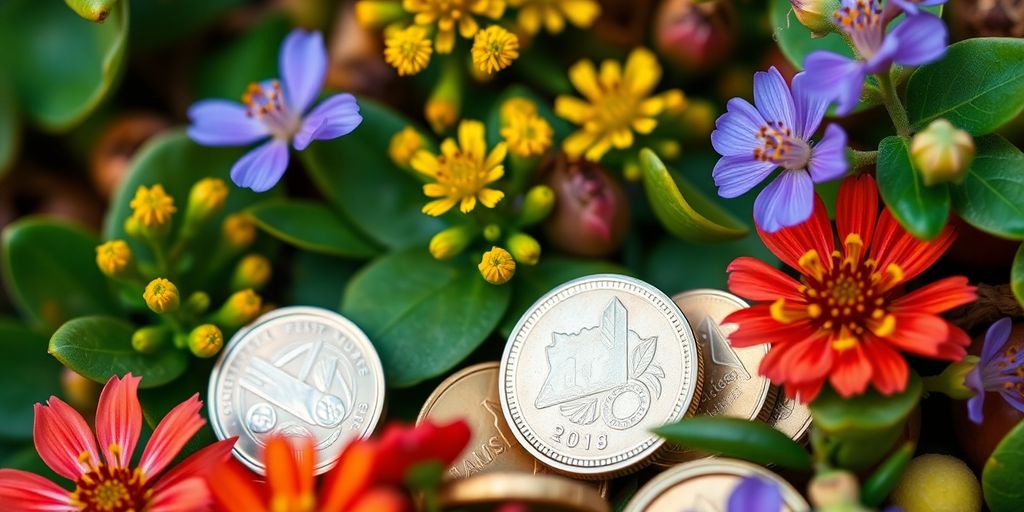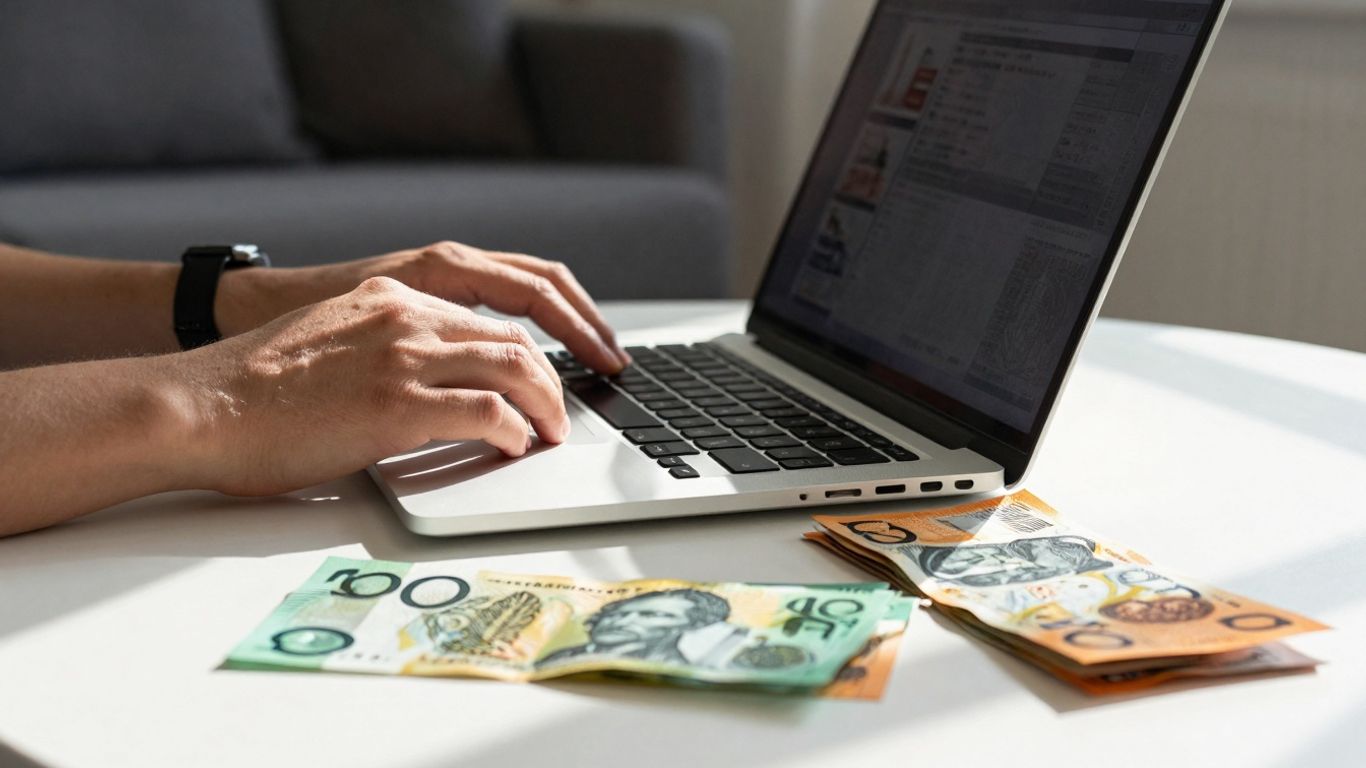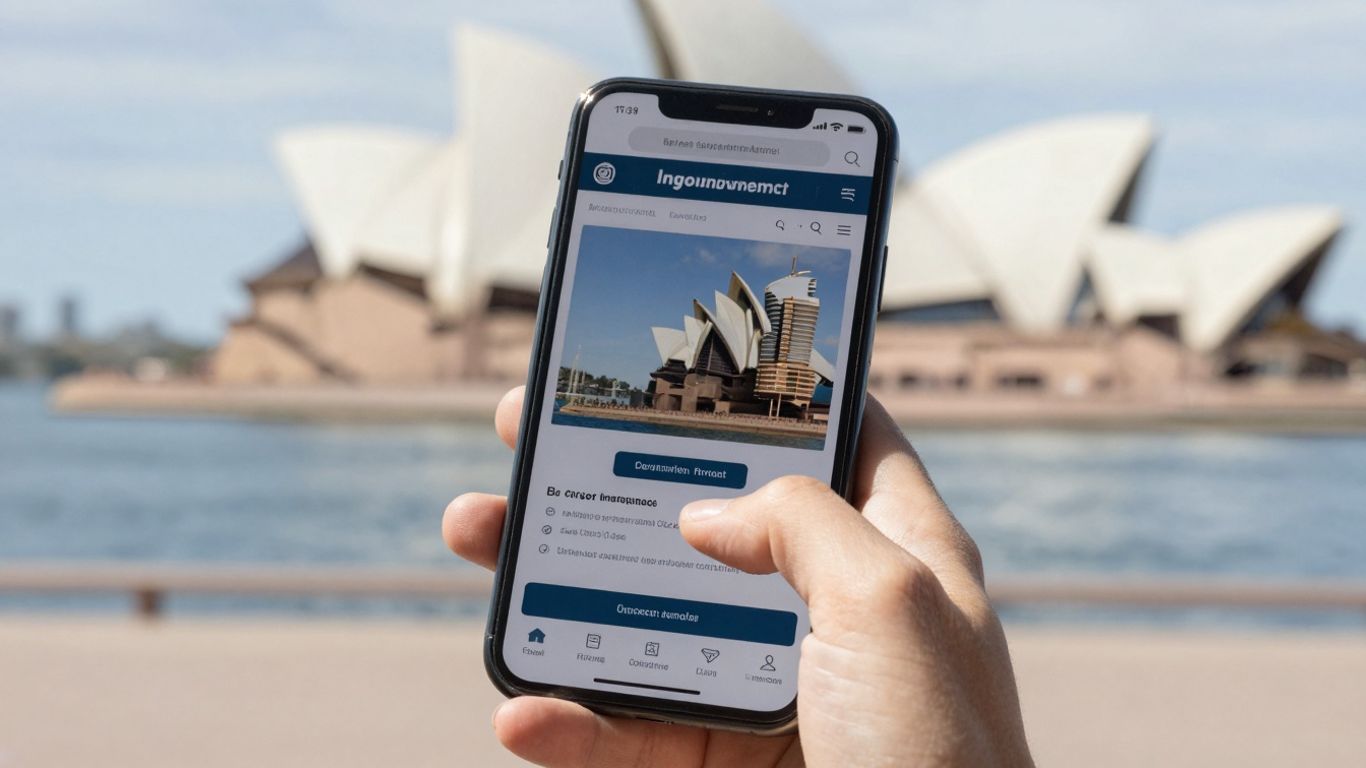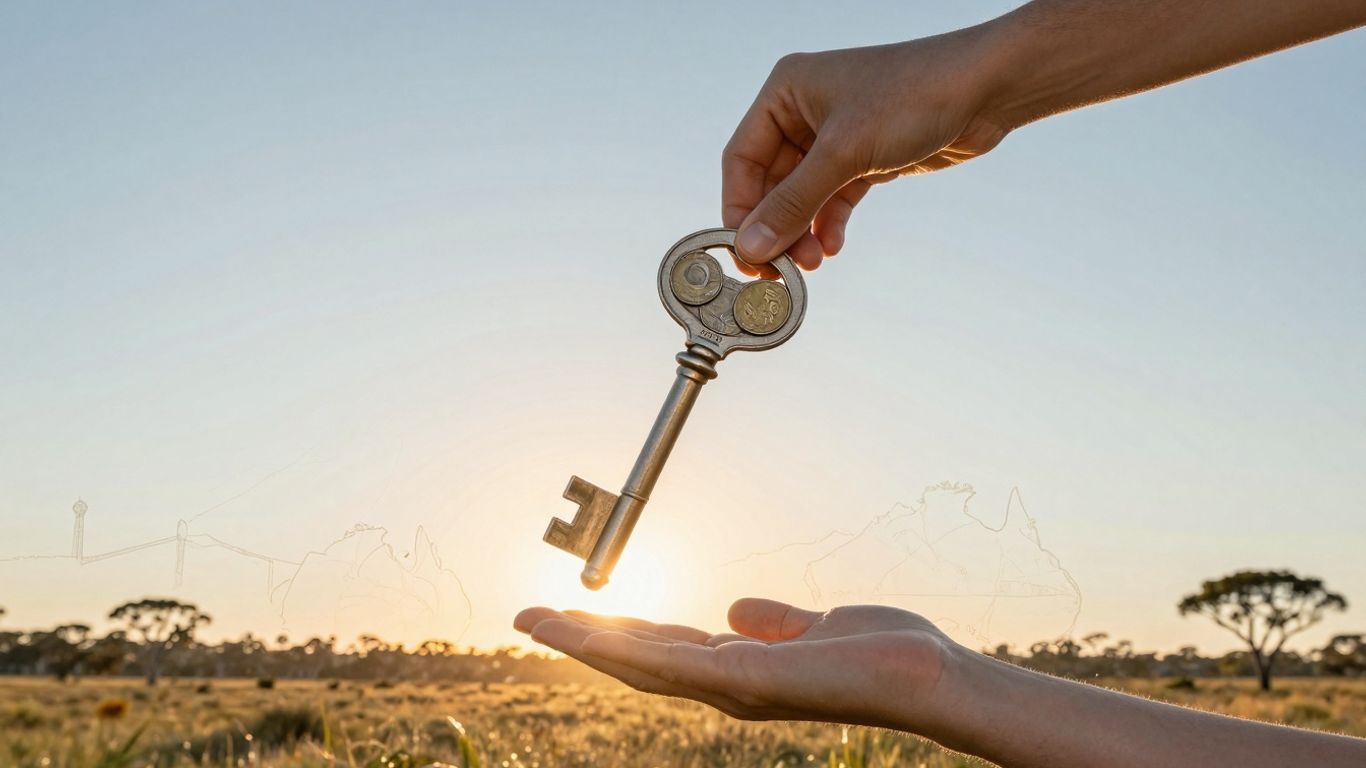Living in Australia doesn’t have to mean spending a fortune. If you’re looking to get more bang for your buck and make your money go further, you’ve come to the right place. Mastering frugal living in Australia is all about making smart choices that add up over time. It’s about enjoying life without the constant stress of overspending. Let’s get into how you can save more and live better, Aussie style.
Key Takeaways
- Get a handle on your finances by creating a realistic budget and tracking every dollar spent to understand where your money is going.
- Slash grocery bills by planning meals, shopping sales, using loyalty programs, and cooking at home more often.
- Reduce major expenses like housing and transport by exploring cheaper living options, cutting energy use, and opting for public transport or carpooling.
- Find plenty of free or low-cost entertainment options by exploring community events and enjoying Australia’s natural beauty.
- Keep an eye on recurring costs by regularly reviewing subscriptions and memberships, cancelling what you don’t use, and looking for cheaper alternatives.
Mastering Your Budget for Frugal Living Australia
Getting your budget sorted is the first big step towards living more frugally here in Australia. It sounds a bit daunting, I know, but honestly, it’s not as scary as it seems. Knowing where your money is actually going is half the battle won. Once you’ve got a clear picture, you can start making smarter choices about how you spend and save.
Assessing Your Financial Situation
First things first, you need to get a handle on your current financial state. This means tracking everything – your income from all sources, and every single dollar you spend. Don’t just guess; actually write it down or use an app. It’s surprising what you find when you really look. For example, I realised I was spending a small fortune on coffees just because I wasn’t thinking about it. Using a budgeting app can make this a bit easier, helping you see exactly where your cash is flowing. This detailed look helps you set realistic goals and avoid those nasty surprise bills.
Creating a Realistic Budget
Once you know your numbers, it’s time to build a budget that actually works for you. Start by listing all your income. Then, break down your expenses into categories like rent or mortgage, groceries, utilities, transport, and fun stuff. Be honest here! It’s no good pretending you only spend $50 on groceries if you know you’re spending closer to $150. A good rule of thumb is the 50/30/20 rule: 50% for needs, 30% for wants, and 20% for savings and debt. Adjust this to fit your life, of course. The key is to make it something you can stick to, not some impossible dream.
Prioritising Savings and Investments
With your budget in place, you can now actively prioritise saving. Think of savings as a non-negotiable expense, just like your rent. Even small amounts add up over time. Setting up automatic transfers to a separate savings account right after you get paid is a great way to make sure it happens. This money can be your safety net for unexpected costs or a fund for future goals. Don’t forget about investing either; even small, regular investments can grow significantly over the years. It’s about making your money work for you, not just sitting there. You can find some great tips on boosting your savings here.
Making small, consistent changes to your spending habits can lead to significant savings over time. It’s about being mindful and intentional with your money.
Smart Grocery Shopping and Meal Planning
Eating well without spending a fortune is totally doable here in Australia. It’s all about being a bit clever with your shopping and planning your meals. Honestly, the amount of money you can save by just thinking ahead is pretty wild.
Setting a Realistic Food Budget
First things first, you need to know where your money is going. Sit down and figure out how much you can realistically spend on groceries each week or fortnight. Look at your bank statements, see what you’ve been spending, and then set a target. It might feel a bit tight at first, but you’ll get used to it. This budget is your new best mate for grocery shopping.
Shopping for Sales and Using Loyalty Programs
Don’t just wander into the supermarket and grab whatever. Keep an eye on the weekly specials flyers – most supermarkets have them online now. Plan your meals around what’s on sale. And those loyalty cards? Use them! They might not seem like much, but those points can add up to discounts or even freebies over time. Some places even offer discounts if you shop later in the evening, so it’s worth checking out local grocery deals.
Cooking at Home and Meal Preparation
This is a big one. Eating out or getting takeaway regularly is a massive budget killer. Cooking at home is almost always cheaper and often healthier. Try to do some meal prep on the weekend. Cook up a big batch of something like chilli or a curry, portion it out, and you’ve got lunches or dinners sorted for the week. It saves time during the busy week too. Even simple things like packing your own lunch instead of buying one can save you a surprising amount of cash.
Making your own meals, even simple ones, is a cornerstone of frugal living. It gives you control over ingredients and portion sizes, and the satisfaction of creating something yourself is a bonus.
Cutting Down on Housing Expenses
Housing is usually the biggest expense for most Aussies, so tackling this area can make a massive difference to your bank balance. It’s not just about the rent or mortgage, either; think about those ongoing bills that keep ticking over. Making smart choices here can free up a surprising amount of cash.
Exploring Economical Housing Alternatives
If your current rent or mortgage is a killer, it might be time to think outside the box. Shared accommodation, like housemates or even a granny flat, can slash your costs. Or, consider moving a bit further out from the city centre; often, you get more bang for your buck in regional areas or outer suburbs. Sometimes, just a change of address can lead to significant savings. You can find some great tips on making smaller spaces work for you here.
Reducing Energy and Utility Bills
Those power and water bills can really add up. Simple habits can make a big impact. Make sure lights are off in empty rooms, unplug appliances when not in use (they still draw power!), and consider a water-efficient showerhead. If you’re renting, chat with your landlord about energy-efficient upgrades. Even small changes, like washing clothes in cold water, can cut down costs over time.
- Heating/Cooling: Set your thermostat a few degrees lower in winter and higher in summer. Use fans instead of air conditioning when possible.
- Lighting: Switch to LED bulbs, which use much less energy.
- Water: Fix any leaky taps, take shorter showers, and only run the dishwasher or washing machine when they’re full.
Being mindful of your energy and water usage isn’t just good for your wallet; it’s better for the environment too. Every little bit helps.
Considering Downsizing or Co-living
Downsizing to a smaller home often means lower rent or mortgage payments, plus reduced utility bills and maintenance costs. It forces you to declutter and live with only what you truly need. Co-living arrangements, where you share common spaces and responsibilities with others, are also becoming more popular. This can be a great way to split costs and build a community, especially in expensive city areas.
Managing Transportation Costs Effectively
Getting around Australia without spending a fortune is totally doable. It’s all about being smart with how you travel. Think about it – your car, fuel, insurance, and maintenance can add up faster than you think. Making conscious choices about your transport can free up a surprising amount of cash each month.
Utilising Public Transportation
Public transport is your best mate when you’re trying to save money. Buses, trains, and trams are generally way cheaper than running your own car, especially in bigger cities. Sydney, for instance, has a pretty good public transport network, making it easy to get around without a car. Plus, you can often find deals on travel cards or passes if you use it regularly. It’s not just about the money either; you can actually relax, read a book, or catch up on podcasts instead of stressing about traffic.
Considering Carpooling or Bike Riding
If public transport isn’t an option, or you just prefer more flexibility, carpooling is a great shout. Splitting fuel and parking costs with mates or colleagues can make a big difference. There are even apps now that help you find people to carpool with. And don’t forget about bikes! For shorter trips, cycling is fantastic. It’s free, good for your health, and you don’t have to worry about parking. Even if you only use your bike for a few trips a week, it adds up.
Budgeting for Commuting Expenses
Even if you use public transport or cycle, there are still costs to consider. You need to factor in the price of your Opal card top-ups, or maybe the occasional taxi or rideshare if you’re in a pinch. If you do drive, make sure you’re budgeting for fuel, registration, insurance, and those inevitable service costs. It’s a good idea to track these expenses for a month or two to get a real picture of what you’re spending. Knowing your numbers helps you find where you can cut back.
Being mindful of your transport choices is a simple yet effective way to boost your savings. It’s about finding a balance that works for your lifestyle and your wallet.
Enjoying Entertainment and Recreation Without Breaking the Bank
Living a frugal life in Australia doesn’t mean you have to miss out on all the fun. There are heaps of ways to enjoy yourself without spending a fortune. It’s all about being a bit clever and knowing where to look.
Exploring Free Community Events
Keep an eye on what’s happening in your local area. Many councils and community groups put on free events, especially during warmer months. Think local festivals, farmers’ markets, outdoor concerts, or even open days at museums. These are fantastic opportunities to soak up some culture, enjoy live music, or just have a nice day out without spending a cent. It’s a great way to connect with your community too. Check out your local council’s website or community notice boards for upcoming events. You might be surprised at what’s on offer right on your doorstep.
Taking Advantage of Nature’s Offerings
Australia is blessed with incredible natural beauty, and much of it is completely free to enjoy. Pack a picnic and head to a local park or beach. Go for a bushwalk or hike in one of the many national parks – just check if there’s an entry fee, though many are free or have a small charge per vehicle. Cycling is another great option, with plenty of bike paths around. Even just a stroll through a botanical garden can be a really refreshing and cheap way to spend an afternoon. Embracing the outdoors is a fantastic way to stay active and de-stress without touching your wallet.
Saving on Movie Nights and Leisure Activities
Going to the cinema can add up pretty quickly, especially with ticket prices and those expensive movie snacks. Why not host your own movie night at home? Get a few friends together, ask everyone to bring a plate, and stream a film. You can even make it a themed night. Libraries are also goldmines for entertainment. You can borrow DVDs, books, and even magazines for free. Many libraries also offer free workshops or talks. For other leisure activities, look for deals and discounts. Sometimes booking online in advance or going during off-peak times can save you a bit. Consider joining a local club or group that shares your interests; membership fees are often much lower than individual activity costs.
Cost-Conscious Health and Personal Care

Looking after yourself doesn’t have to cost a fortune. There are heaps of ways to stay healthy and feel good without emptying your wallet. It’s all about being a bit clever with your choices.
Practising Preventative Healthcare
This is a big one, honestly. Getting regular check-ups with your doctor or dentist might seem like an extra expense, but it can actually save you a bucketload of cash down the track. Catching little things early means they’re usually easier and cheaper to fix. Think of it like getting your car serviced – it stops bigger, more expensive problems from popping up later. It’s worth looking into any government-subsidised health services or bulk-billing clinics in your area to keep these costs down. Staying on top of vaccinations and screenings is also part of this – it’s just smart.
Finding Budget-Friendly Personal Care Options
Personal care is another area where you can make some serious savings. Instead of always buying the fancy brands, try the generic or store-brand versions of things like toothpaste, shampoo, and soap. Often, they’re made by the same companies and are just as good, but much cheaper. You can also save a fair bit by making your own cleaning products using pantry staples like vinegar and baking soda – it’s surprisingly effective and good for the environment too. For beauty treatments, there are tons of free tutorials online for things like DIY facials or even simple haircuts. Plus, don’t forget to take advantage of free fitness resources like local parks for walks or runs, or the many free workout videos available online.
Utilising Free Fitness Resources
Staying active is super important for both physical and mental health, and you don’t need a pricey gym membership to do it. Australia has so many fantastic free options. Your local park is probably great for a walk, jog, or even some outdoor exercises. Many councils offer free or low-cost fitness classes in parks during warmer months, so keep an eye out for those. YouTube is also a goldmine for free workout videos, covering everything from yoga and Pilates to high-intensity interval training. Even just walking or cycling to nearby places instead of driving is a great way to get your steps in and save on fuel. It’s about making movement a natural part of your day.
Evaluating Subscriptions and Memberships

It’s easy to get caught up in the convenience of subscriptions and memberships, but these can really add up. Think about all those streaming services, gym memberships, apps, and even those subscription boxes that seemed like a good idea at the time. Regularly checking what you’re paying for is a simple yet effective way to boost your savings.
Categorising and Assessing Value
First things first, grab a cuppa and sit down with your bank statements. List out every single subscription and membership you currently have. Don’t forget the ones you only use occasionally. For each one, ask yourself: "Am I actually getting my money’s worth?" Be honest here. If you’re paying for a gym membership but haven’t been in three months, or a streaming service you only watch one show on, it’s probably not providing good value.
Seeking Cheaper Alternatives
Once you know what you’re paying for and how much you use it, you can start looking for cheaper options. For example, instead of having multiple streaming services, maybe you can rotate them. You could subscribe to one for a month to catch up on shows, then cancel and switch to another. For things like music or news, see if your local library offers free access to digital resources. You might even find that sharing accounts with family or friends (where permitted) can cut costs significantly. For instance, if you’re a big fan of Australian movies and TV, you might want to look into Stan Australia plans to see if they offer a better deal for your viewing habits.
Regularly Reviewing and Cancelling Unused Services
This is the most important step. If a subscription isn’t providing enough value or you’re not using it, cancel it. Don’t feel guilty about it; it’s your money! Set a reminder on your phone or calendar to review your subscriptions every few months. This way, you can catch any unwanted renewals and make sure you’re only paying for what you truly need and use. It’s a bit like decluttering your digital life, and it can make a surprising difference to your bank balance.
So, What’s the Takeaway?
Look, living frugally in Australia isn’t about missing out on life; it’s about being smarter with your cash. We’ve gone through heaps of ways to save, from packing your own lunch to finding free fun outdoors. It might take a bit of effort at first, maybe even a few oops moments, but sticking to a budget and being mindful of where your money goes really does make a difference. You’ll find you have more breathing room, less stress about bills, and can actually put some aside for the things that really matter. Give a couple of these ideas a whirl – you might be surprised at how much you can save and how much better you feel for it.
Frequently Asked Questions
How can I save money on groceries in Australia?
You can save a few quid on your groceries by hitting up local markets for fresh stuff and buying things like toilet paper or canned beans in bulk. Also, keep an eye out for specials and use those loyalty cards at the supermarket!
Is it cheaper to cook at home or eat out in Australia?
Generally, cooking your own grub at home is way cheaper than eating out at restaurants. Plus, you know exactly what’s going into your food!
What are some budget-friendly activities to do in Australia?
Australia’s got heaps of cheap or free things to do. Think bushwalking in national parks, chilling at the beach, or checking out free museum days. Even a picnic in a park can be a ripper day out!
Can I use public transport effectively while living on a budget?
Definitely! Public transport in the big Aussie cities is pretty good and usually much cheaper than running your own car or catching taxis. Grab a travel card and hop on the bus or train!
How can healthcare costs be managed when living on a budget in Australia?
Yeah, you can manage your health costs. Make sure you’re signed up for Medicare, as it covers a lot of doctor visits and hospital stays. Also, preventative care, like getting a check-up, can stop bigger bills later on.
What should I do with subscriptions and memberships I don’t use much?
If you’ve got subscriptions you barely use, like streaming services or gym memberships, it’s time to give them the flick. Look for cheaper alternatives or see if you can share accounts with mates.





